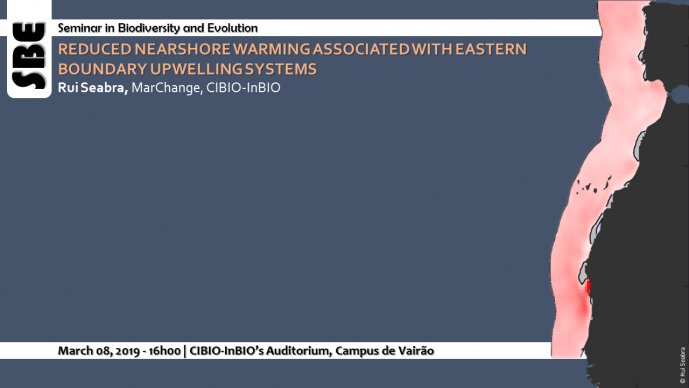REDUCED NEARSHORE WARMING ASSOCIATED WITH EASTERN BOUNDARY UPWELLING SYSTEMS


Coastal marine biodiversity within eastern boundary upwelling systems (EBUS) is closely linked to the cooler sea temperatures associated with them. It has been suggested that global warming could lead to enhanced sea surface cooling in EBUS via the intensification of upwelling-favorable winds. Conversely, increased stratification and the widespread warming of the world's oceans could drive these systems in the opposite direction. These competing mechanisms hold the potential for driving the thermal envelopes of EBUS towards – or away from – the thermal envelopes found outside EBUS, with likely contrasting implications for biodiversity conservation in each scenario. In this talk we characterize the patterns of net sea surface warming rates over more than three decades throughout the global ocean to evaluate if waters inside EBUS are changing differently from those outside EBUS. Our data points to a trend of reduced warming inside EBUS, especially along the nearshore. We found that reduced net warming was prevalent in Pacific EBUS but restricted in Atlantic EBUS. In contrast, net warming in the coastal ocean outside EBUS was pervasive and generally associated with proximity to land. These results suggest that EBUS have been responding to climate change differently from the rest of the global ocean, potentially buffering coastal biomes from decades of global warming.
Rui Seabra´s main research interest is in the study of how environmental factors influence species’ distributions across multiple scales. Most of his work comprises either the characterization of environmental patterns (temperature, shading, wave force, desiccation, etc.) from the global to the microhabitat level, or the determination of how important those factors are for the build-up of stress in organisms. Rui Seabra likes multidisciplinary approaches, and his current work combines aspects from experimental ecology, behavior analysis, physiology, climatology, electronics, and modeling.
[Host: Fernando Lima - Marine Ecology, Diversity and Change]
Image credis: Rui Seabra